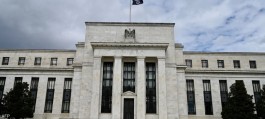The percentage of bitcoin traded on weekends as a percentage of total trading has fallen to an all-time low of 16% this year, according to cryptocurrency research firm Kaiko.
The drop comes on the heels of the launch of Bitcoin exchange-traded funds, which have apparently changed Bitcoin trading periods to be more in line with traditional stock exchange trading times, reducing its price volatility.
24/7 trading
One of the features of cryptocurrencies is that, unlike stocks, they are traded 24 hours a day, even on Saturdays and Sundays. In the past, Bitcoin trading has gained a bad reputation for wild weekends, due to the violent price fluctuations that the cryptocurrency experiences.
But this phenomenon appears to have started to wane since Bitcoin’s share of trading volume began to dwindle over the weekend from its 2019 high of 28%. The launch of Bitcoin ETFs is likely a big reason for this.
Weekend trading declines have been a trend for years, but have been exacerbated by ETFs, according to Desislava Obert, senior analyst at Kaiko.
Bitcoin ETFs were launched with the approval of the U.S. Securities and Exchange Commission in early 2024 and have been a huge hit with investors since then, sending bitcoin’s price to a record high in March. While those gains have been trimmed, the price of the largest cryptocurrency is still up about 45% this year to around $61,000.
Bitcoin ETFs
Unlike most cryptocurrencies that can be traded at any time on exchanges like Binance, Bitcoin funds follow the timing of the traditional exchange they are traded on, which means no trading on weekends.
The percentage of bitcoin traded on weekdays between 3 p.m. and 4 p.m. increased to 6.7%, up from 4.5% in Q4 2023, according to Kaiko. This period is known as the benchmarking window, when ETF owners determine the price of bitcoin and then use it to calculate the net asset value of their funds.
Kaiko believes that the collapse of crypto-accepting banks like Silicon Valley Bank and Signature Bank in March 2023 also contributed to the decline in weekend trading volumes. This is because market makers can no longer use banks’ payment networks 24/7 to buy and sell cryptocurrencies in real time.
The gap between weekend trading and the total is likely to persist, as market makers, who derive their revenue from the spread between bid and ask on large volumes of trades, have less incentive to provide liquidity in a low-volume environment, Kaiko said in a report.
Low price volatility
The increasing adoption of cryptocurrencies by institutions through Bitcoin exchange-traded funds has also led to a significant reduction in price volatility, according to another report from Kaiko.
When Bitcoin last hit record highs in November 2021, volatility soared to nearly 106%. After the largest cryptocurrency hit an all-time high of $73,798 in March amid optimism over ETFs, volatility was just 40%.
The trend of declining volatility, and the fact that it has remained below 50% since the beginning of 2023, indicates that Bitcoin is becoming a more established asset, according to Kaiko.
The report stated: Although it is too early to suggest that this is the new normal, changes in the structure of the Bitcoin market over the past year may help explain why price action has been relatively (boring).



































